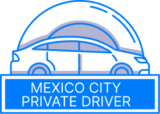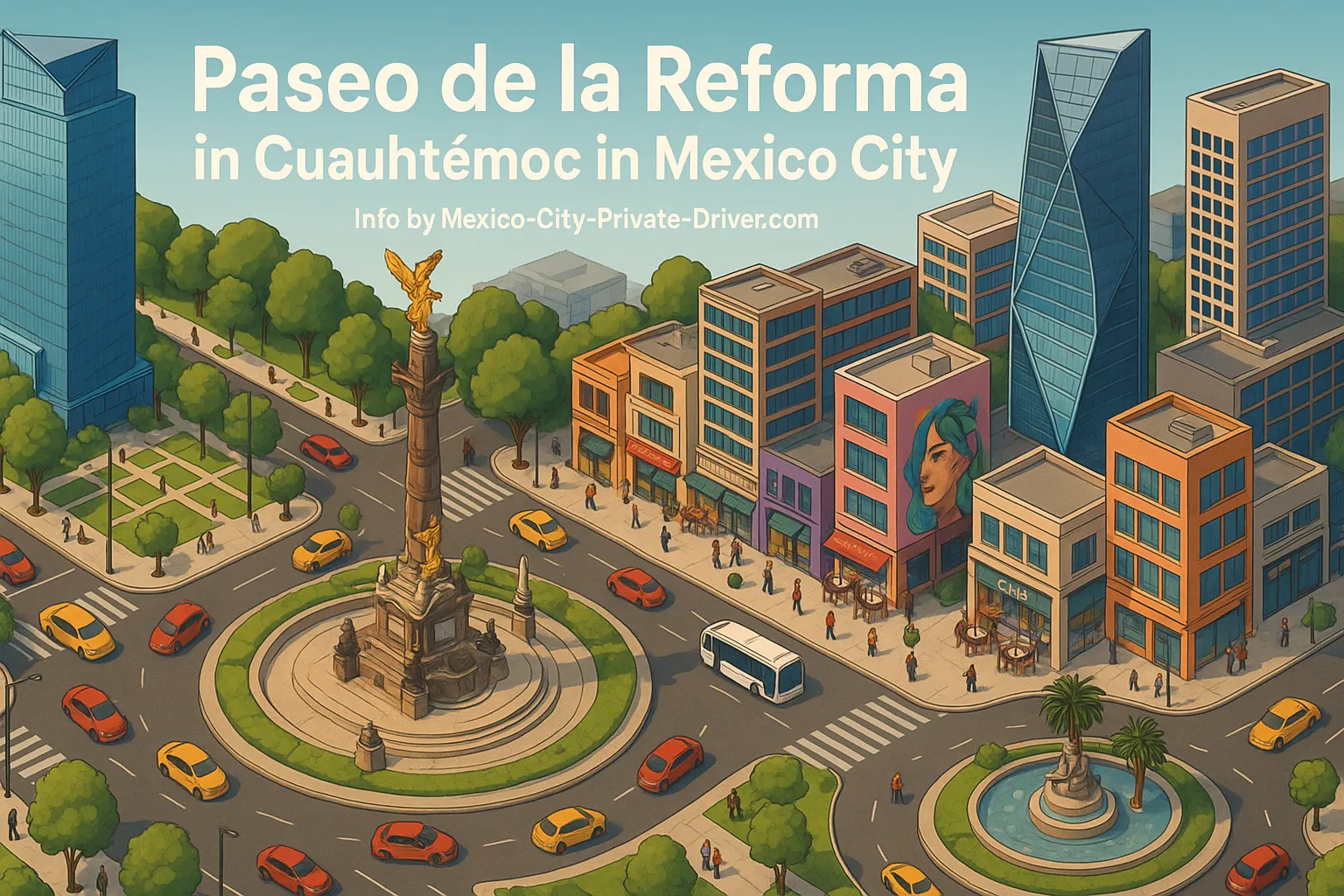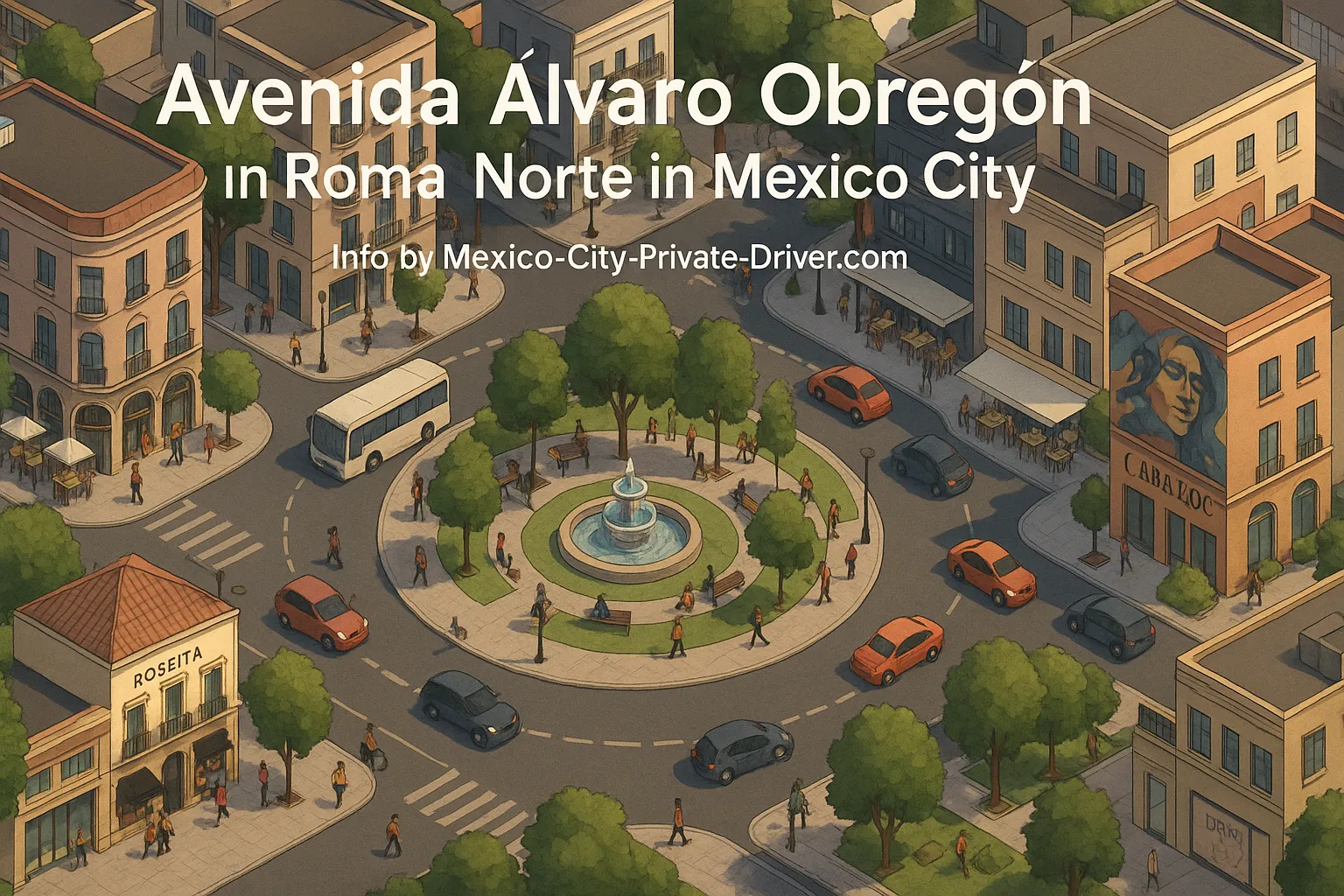Driving into the pulse of Mexico City: why Eje 6 Sur at Central de Abasto matters
As the owner and lead chauffeur of Mexico-City-Private-Driver.com, I have a simple rule: know the city from the windshield in, not from a map alone. One of the places that has taught me the most about Mexico City’s rhythms is the stretch of Eje 6 Sur that bisects the Central de Abasto. If you’re a traveler thinking about hiring a private driver here, let me tell you why this corridor is worth understanding — and why, with the right timing and a trusted driver, it can open a side of the city few tourists ever see.
Quick orientation: what is Eje 6 Sur and where is Central de Abasto?
Eje 6 Sur is part of Mexico City’s network of ejes viales — the arterial grid of rapid car routes that slice across the metropolitan area. The name can appear in searches in many forms — “Eje 6 Sur,” “Eje 6,” “Eje Seis Sur,” even interpreted as “Eje 6” in English-language directions — but what matters to visitors is practical: this is a busy, wide thoroughfare that handles heavy local traffic and lots of freight access near the Central de Abasto complex.
The Central de Abasto itself is the city’s huge wholesale food market — a sprawling complex servicing restaurants, stores and families across Mexico City and beyond. It’s literally a city within a city, and the stretches of Eje 6 Sur alongside it are geared for deliveries, trucks, and high-volume movement rather than leisurely sightseeing. That said, the area is fascinating if you approach it with local knowledge.
Street layout, traffic patterns, and driving essentials
What the road looks like
- Eje-like design: wide lanes, dedicated turning sections, and fast-moving through-traffic are typical. Expect multiple lanes in each direction and long curb stretches used by freight loading and unloading.
- Freight-dominant curbspace: many of the curb cuts and small service roads feed directly into the market’s internal docks — this affects where we can safely stop for clients.
- Signalized intersections: at major cross streets the traffic lights are timed for flow, not for pedestrian browsing — crossing on foot can take time.
Traffic: when to go (and when to avoid)
Timing is everything. In my experience as a private driver:
- Early mornings (3:00–8:00): the market is at full throttle. Trucks, suppliers and market staff move in waves. If your goal is to see the wholesale market operating — and especially if youre escorting a chef, gastronome, or food photographer — this is the time. Be aware there’s little parking and many restricted lanes.
- Late mornings to early afternoon (10:00–14:00): freight operations are still active but pedestrian visits become easier. Traffic starts to build on the ejes as other parts of the city pick up.
- Rush hours (17:00–21:00): expect heavy commuter congestion on the ejes, including Eje 6 Sur. Surface streets feeding the market can become bottlenecks.
Driving and parking details
- Best pickup points: We use designated service roads and formal parking areas outside the main cargo gates. I never stop in the freight-loading lanes — it slows down deliveries and can lead to fines.
- Vehicle size matters: large vans and trucks have priority entry for goods. For client pickups I generally use a mid-size SUV or sedan — easier to maneuver and park in the service areas.
- Permits and regulations: some interior docks and internal lanes are restricted to market vendors and authorized delivery vehicles. As your driver I handle the logistics: I know which gates allow passenger loading and which require vendor credentials.
- Security screening: certain entrances may have security checks or informal inspections — carry IDs, and allow extra time.
Public transportation access and connections
Central de Abasto is a working hub, and it’s reachable by public transport, but expect a commercial and industrial feel rather than a tourist-friendly transit node. Many visitors I drive to the area arrive via private car, taxi or ride-hailing service for safety, convenience, and for door-to-door timing.
- Metro and bus connections: the market area is connected to the larger metro and bus network; many visitors use a short taxi or ride-hail from a main transit hub. If you prefer public transit I can coordinate meeting points at major metro interchanges that are convenient and familiar to drivers.
- Transfers: a frequent pattern I use for clients is to pick them up at a nearby metro hub (comfortable for guests) and then drive the short distance into the market area to avoid walking with luggage or the cost of multiple transfers.
Safety and etiquette: practical tips from a professional driver
On safety
I take safety seriously. The Central de Abasto and the Eje 6 Sur corridor are not tourist traps, they’re a working part of the city. That means sensible precautions:
- Keep possessions close: dawn market crowds can be thick; I advise clients to carry only essential items and leave valuables locked in the vehicle.
- Use official pickup zones: we avoid stopping in truck bays or unofficial shoulders. That minimizes confrontations and keeps your itinerary on schedule.
- Trust a local vehicle: if you’re planning a hotel pickup in Condesa, Roma or Polanco, I recommend booking a door-to-door service rather than independent taxis for visits to the Abasto area.
On etiquette
Vendors are working; respect their space. If you want to photograph, ask permission. If we’re arranging a special shopping visit for a chef or foodies, I’ll coordinate a local contact who can introduce you to vendors and make bargaining smoother.
Benefits for visitors: why include Eje 6 Sur / Central de Abasto on your itinerary
Many travelers want a curated, authentic experience — not crowded monuments. Bringing the Central de Abasto into an itinerary offers:
- Unfiltered food culture: wholesale markets are the backbone of Mexican cuisine. You see ingredients in volume and variety that restaurants never display.
- Behind-the-scenes access: with a local driver you can visit vendor docks and meet small producers or truckers who bring in regional specialties.
- Time-efficient logistics: I can synchronize pickups, avoid restricted areas, and schedule visits around delivery rushes so you experience the market without the stress.
Local tips a private driver would never forget
- Coordinate with your vendor if possible: if you’re coming to buy supplies for a restaurant or an event, tell your driver and we’ll schedule for 4–6 AM. Any later and the best produce is often already moved.
- Know the gates: the market has specific gates for meat, produce, flowers, and dry goods. We pick the gate that suits your purpose so you don’t face long internal walks.
- Bring small bills and a calculator: many wholesale sellers prefer cash. It’s helpful to have smaller denominations for quick transactions.
- Wear sensible shoes: cargo zones are concrete, sometimes wet or dusty. I never recommend sandals on market ground.
- Late-night pickups need coordination: some market activities operate 24/7, but official parking and lighting vary. If you plan a night pickup, let me arrange an illuminated, secure place to wait.
Custom routes and sample itineraries I recommend
Below are practical sample routes and full-day ideas I regularly drive for clients. Each is tailored depending on pickup location: Condesa, Roma, Polanco, Centro Histórico, or from the airport.
From Condesa / Roma: early-morning gastronomic run
- Pickup at your hotel near Avenida Ámsterdam (Amsterdam Avenue) in Condesa — I’ll meet you with coffee and a cooler for fragile purchases.
- Quick drive using Insurgentes or Álvaro Obregón to the east, then the ejes; we time the route to arrive at the market between 4:00–6:00 AM.
- Visit: produce and chiles, meet a corn seller with heirloom varieties, get a guided tour with a market fixer. Back to Condesa by late morning for a private chef’s demo or market-to-table lunch.
From Polanco: art, markets and modern Mexico City
- Pickup from your hotel near Masaryk Avenue or Reforma. Drive across the city with a scenic detour past the historic Centro and then east toward Central de Abasto.
- Stop at a local taco stand for a quick breakfast en route (my favorites are the stand-alone ones that supply the vendors), then arrive at the market mid-morning when it’s easier to walk the aisles.
- Return via the southern ejes, with the option to stop at the canal-side neighborhoods or the recently revitalized arts spaces near Coyoacán if time permits.
From the airport (AICM): logistics and timing
Because Central de Abasto is on the east side of the metropolitan area, it’s naturally convenient from the airport compared to many central hotel neighborhoods. I often pick up clients who land early and want to head directly to the market before settling into their hotel.
- Plan for a quick 15–30 minute drive depending on traffic; if you’ll be meeting vendors, arrive as early as possible.
- Allow me to coordinate between your arrival and market timing — flights are unpredictable and vendors stick to their schedules.
Nearby attractions and how to combine them
While the Central de Abasto is the star here, the surrounding neighborhoods and a handful of accessible sights make for a fuller day:
- Historic Centre (Centro Histórico): a short drive west; pair an early market run with an afternoon city walk past the Zócalo, Palacio de Bellas Artes, or the Templo Mayor.
- Condesa and Roma: if you’re staying here, combine market logistics with parks and cafés along Avenida Ámsterdam (Amsterdam Avenue / Avenida Ámsterdam), Avenida Veracruz, and Parque México.
- Polanco and Reforma: for guests who prefer upscale dining after the market — many chefs who source at the Abasto have restaurants in these neighborhoods.
- Cultural visits: museums, artisan shops and local churches near the eastern boroughs can be included on request.
Insider knowledge: things only a private driver would tell you
Here are the small, powerful things that separate a good drive from a great one:
- We use gate rotations: depending on day-of-week and delivery schedules, I’ll pick the gate with the least congestion. That usually saves clients 15–45 minutes versus arriving blind to market flow.
- There are local “fixers”: informal helpers who move product inside the market and know vendor shorthand. For private shopping trips I hire a fixer to translate, carry goods and negotiate bulk deals — that’s a huge value.
- Not all vendors are equal: some will sell to the public, others will reserve certain stocks only for registered clients. If there’s a particular ingredient you want (chiapas coffee beans, a rare salsa base, heirloom corn), tell me beforehand and I’ll pre-call vendors.
- Price discipline: vendors expect bargaining, but not inflated requests. A local driver who knows recommended price ranges prevents you from overpaying.
The “wow” story: dawn, a chef, and a sack of purple corn
I’ll never forget one winter morning a few years ago. We left Condesa at 3:15 AM to meet a visiting chef who wanted to source unusual corn varieties for a special tasting menu. It was cold, and the market was already alive — forklifts whirring, stacks of crates like mini skyscrapers, and the smell of citrus and fresh hoja santa hanging in the air.
At the flowers gate a vendor waved us through to a quieter lane; then, down a narrow aisle behind the stalls, I watched the chef kneel and inspect a burlap sack. He pulled back the top, and there it was: deep, iridescent purple corn — not the commercial purple you see in supermarkets, but a living, irregular, heirloom grain. The vendor told us the kernel came from a family-run producer two states over and that they only sold a few sacks to chefs they trusted.
My client ended up buying three sacks. The vendor gave a short, proud history about the seed. The chef invited us to a small tasting of toasted nixtamal nearby — a humble, improvised ritual among strangers: the chef, the vendor, me, and my client. We ate with our hands, the purple masa warm and slightly sweet, and for a moment the market’s frenzy dimmed. That little exchange — of knowledge, pride, and food — is the real magic of the Abasto. I still get goosebumps remembering how a simple ingredient can connect stories across geography and generations.
Common questions I get as a private driver
Is the Central de Abasto tourist-friendly?
It’s not a classic tourist attraction. It’s primarily a wholesale market. That said, you can absolutely visit safely and have a rich experience if you plan with a local driver who knows the gates, schedules, and etiquette.
Can I shop for small quantities?
Yes. Many vendors will sell smaller lots to visitors — especially if you’re buying for tasting, research, or culinary experiences. For bulk buying, we’ll negotiate volume discounts and coordinate loading.
How long should I spend?
For a meaningful visit: minimum 90 minutes. For a vendor-introductions day with purchases and a guided tour, 3–4 hours lets you move comfortably and include a nearby lunch.
Booking and logistics with Mexico-City-Private-Driver.com
When you hire me or one of my drivers for a visit to Eje 6 Sur and Central de Abasto, here’s what we arrange:
- Pickup coordination: hotel pickup or airport meet-and-greet, and we handle timing with the market’s schedule.
- Gate and parking selection: we pick the right entrance and hold a legal, secure pickup space so your party isn’t left waiting in a freight lane.
- Vendor introductions: if desired, we pre-contact trusted market fixers who can guide your shopping and translate local terms.
- Coolers and packing: for fragile purchases we bring insulated boxes and secure stowage to protect your goods on the return trip.
SEO-friendly names and neighborhood context
It helps to know the many ways people search for this route. You’ll see references across the web and in local conversation:
- Eje 6 Sur
- Eje 6
- Eje Seis Sur
- Central de Abasto
- Abasto Market
- Avenida Ámsterdam / Amsterdam Avenue (when describing nearby Condesa access points)
- Central de Abasto de la Ciudad de México
- Wholesale food market Mexico City
And in context with neighborhoods travelers love: Condesa (Avenida Ámsterdam), Roma, Polanco, Centro Histórico, and the airport corridor. I routinely ferry clients between those neighborhoods and the market — each pairing creates a different kind of day.
Final thoughts: why a private driver transforms the visit
The Central de Abasto and Eje 6 Sur are powerful reminders that cities are built on supply and movement. You can wander tourist streets and eat great tacos — or you can peer into the raw logistical heart that feeds an entire megalopolis. As a driver, my job is to make that access graceful, safe and meaningful.
If you want to experience the market as chefs, food lovers, photographers, or curious travelers do, hire someone who knows the gates, the rhythm of the ejes, and the local human network. I’ll handle the permits, the early starts, the parking, and the conversations — you bring curiosity.
Contact Mexico-City-Private-Driver.com and tell me when you want to go. I’ll plan the route, recommend the best time to arrive, and make sure the only surprise you have is a good one — like the taste of that first warm tortilla made from purple corn.
Martin Weidemann is a digital transformation expert and entrepreneur with over 20 years of experience leading fintech and innovation projects. As a LinkedIn Top Voice in Digital Transformation and contributor to outlets like Forbes, he now brings that same expertise to travel and mobility in Mexico City through Mexico-City-Private-Driver.com. His focus: trustworthy service, local insights, and peace of mind for travelers.


